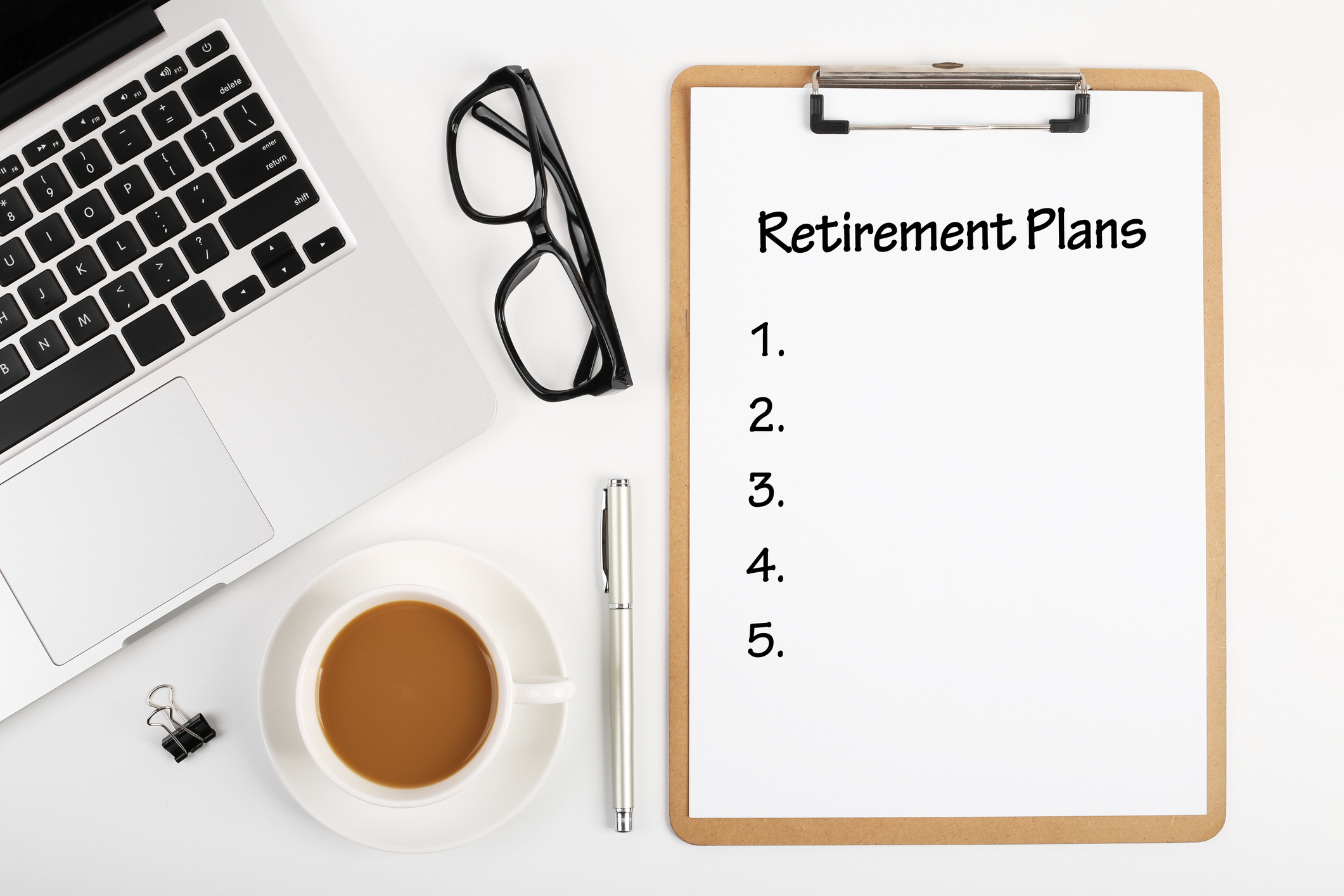Living With an Uneven Income
When your cash flow is unpredictable but your bills arrive like clockwork, you need an ironclad plan.


Sarah and Ryan Parker of Richmond, Va., didn’t plan to work for themselves when they got married 13 years ago. Sarah, 35, intended to be a nurse anesthetist. Ryan, 38, was committed to a career in the banking industry. But while Sarah was pursuing her nursing degree, she found herself spending most of her free time making hand-stamped silverware and other custom-made housewares. In 2011, she decided to sell her creations on Etsy, an online marketplace for handmade goods. The business, Milk & Honey Luxuries, was so successful that, in 2012, Sarah decided to pursue it full-time. A year later, Ryan left his job at Bank of America to help her expand the business.
With 2014 revenues of about $450,000, the Parkers are earning enough to provide a comfortable lifestyle for themselves and their two children, Nate, 10, and Lillian, 7. Still, adjusting to life without a regular paycheck has been a challenge. Last September, Etsy restructured its online and mobile platforms, leading to a sharp drop in the company’s sales—and the family’s income. Sales on Etsy have since recovered, but the experience led the Parkers to amp up their own Web site, www.milkandhoneyluxuries.com, which now offers more than 400 products. Their products are also sold in Nordstrom stores across the country, at Martha Stewart’s American Made Market and at about three dozen boutiques.
Taxes have been a challenge, too. After years of receiving a refund, the Parkers received a large and unexpected bill for tax year 2013. Sales had spiked, and because they hadn’t been making quarterly payments, they had to pay underpayment penalties. They paid most of the bill when it was due and retired the balance through an IRS installment agreement—at 3% interest. They now make quarterly tax payments.
From just $107.88 $24.99 for Kiplinger Personal Finance
Become a smarter, better informed investor. Subscribe from just $107.88 $24.99, plus get up to 4 Special Issues

Sign up for Kiplinger’s Free Newsletters
Profit and prosper with the best of expert advice on investing, taxes, retirement, personal finance and more - straight to your e-mail.
Profit and prosper with the best of expert advice - straight to your e-mail.
One-third of the U.S. workforce—some 53 million Americans—work for themselves at least part-time, as independent contractors, moonlighters, small-business owners or temporary workers, according to a 2014 survey by Freelancers Union and Elance-oDesk (now known as Upwork). Some, like the Parkers, do it by choice; others do it because they can’t find a salaried job; many work freelance in addition to their nine-to-five jobs. But all share common challenges: preparing for the inevitable lean times, putting aside money for retirement and staying on the right side of the IRS.
Budgeting: Wants vs. Needs
Financial planners often talk about the importance of prioritizing spending by distinguishing between wants and needs. Most of us aren’t very good at it. But if you’re not sure when your next paycheck will arrive, you need to have a firm understanding of how much you need to get by versus what you need to live comfortably. Although your income may be irregular, bills for your mortgage, utilities, car payments and other essentials will continue to arrive on schedule. Before you go out on your own, you have to know what it really costs you to live because “it may be slim pickings the first couple of years,” says Amy Jo Lauber, a certified financial planner in West Seneca, N.Y.
Delena Stout of Kansas City, Mo., learned how to make sacrifices after she was downsized out of her job in business development. In 2003, she started Brookside Barkery & Bath, a dog-grooming and pet-supply store. She now owns two pet supply stores in the Kansas City area that generated revenues of $2.7 million last year. While she has no regrets, forgoing a steady paycheck “was a big lifestyle change.” When you’re starting out, she says, “you don’t go out to dinner. You don’t travel. You don’t have disposable income.”
Tools such as Mint.com offer a good way to track your spending and separate essential costs from everything else. Another option is to record all of your expenses on a spreadsheet. The key is to understand how much you need each month to manage your household.
Once you’ve figured out how much it costs to keep the lights on, you can decide how much you should stash in an emergency savings account. While someone with a stable job and regular income may be able to get by with three to six months of living expenses in an emergency account, people with erratic incomes need a larger financial cushion. Reid Hartsfield, a certified financial planner in Jacksonville, Fla., recommends keeping six months’ to a year’s worth of expenses in the account. If your spouse has a job with a regular paycheck, you might be able to get by with less than that (see How Much to Save for an Emergency).
Taxes: Pay As You Go
If you work for yourself, you are responsible for complying with the tax law’s pay-as-you-go rules. (After all, there’s no employer to dip into each paycheck for Uncle Sam’s take.) Failing to pay during the year could trigger underpayment penalties, even if you square up with the IRS on April 15.
For most self-employed taxpayers, that means paying taxes in quarterly installments with Form 1040-ES. For 2015, the first installment was due April 15; the remaining deadlines are June 15, September 15, and January 15, 2016. You don’t need to make estimated payments if you expect to owe less than $1,000 for the year beyond what’s withheld from paychecks if you’re also an employee.
In addition to income taxes, you’re responsible for paying Social Security and Medicare taxes. When you’re working for someone else, you split the tax with your employer; when you work for yourself, you must pay the entire amount. In 2015, that’s 15.3% on the first $118,500 of your net earnings from self-employment; if you earn more than that, you’ll still owe the 2.9% Medicare tax. (If you also have a job as an employee, your earnings from that gig count against the $118,500 cap, even though you pay just 50% of the tax on your salary.) The good news is that you can deduct half of the amount you pay on your self-employment earnings when calculating your adjusted gross income on your 1040 tax form.
One strategy for paying estimated taxes is to look at how much you paid in taxes last year, divide it by four and use that figure for your quarterly payments. As long as you pay at least 90% of what you end up owing for the year or 100% of the amount you owed last year (110% if last year’s adjusted gross income was more than $150,000), the IRS won’t ding you for underpayment penalties. Unless you live in one of the nine states with no income tax, you’ll probably need to make quarterly payments to your state too (check with your state’s tax agency for details).
If you experience a long dry spell, you can recalculate the amount of your quarterly payments. Use the worksheet on the 1040-ES form to figure the appropriate payments.
It’s worth enlisting help from an enrolled agent or certified public accountant, particularly when you’re starting out. An experienced tax preparer can also explain how to use the annualized income installment method, which is useful for workers with seasonal income. But hiring a tax pro won’t relieve you of the responsibility to put aside enough money from your earnings to cover taxes. Skip this step and underpayment penalties will be the least of your worries. Come April 15, you could end up with a tax bill you can’t pay, triggering interest and late-payment penalties on the balance.
Even if your income soars this year, you are protected from the underpayment penalty as long as you have paid 100% (110% for high earners) of last year’s bill in estimated payments. Just make sure you’re squirreling away enough cash to pay the piper come April 15. Stefanie O’Connell, 28, a New York City actress and writer who blogs about personal finance at www.thebrokeandbeautifullife.com, says she saves 26% of every paycheck she receives to cover taxes. O’Connell, whose acting roles have ranged from Cinderella to a Who in How the Grinch Stole Christmas, says she has experienced some lean times but has always had enough money to pay the tax bill.
Some people with irregular income may need to set aside more than that. Jeffrey Schneider, an enrolled agent in Port Saint Lucie, Fla., advises his clients, many of whom are real estate agents, to put aside 40% of their gross income. If that results in a refund when you file your tax return, he recommends applying the money to the first-quarter installment payment due April 15. That gives you until June to come up with the next payment, he says.
Self-employed workers are eligible for a raft of business-related tax breaks for everything from the cost of a home office to health insurance premiums. It’s critical, though, to keep scrupulous records of all of your deductible expenses, along with your income. Tax returns that include a Schedule C, which is where sole proprietors report profits or losses from a business, are prime candidates to be scrutinized by IRS agents on the lookout for excessive deductions or for underreported income.
[page break]
Retirement: Keep on Saving
When you’re living on rice and beans until the next payday, saving for retirement may be the farthest thing from your mind. But unless you want to work forever, you should divert some of your income to a retirement plan. Depending on the type of plan you use, you may be allowed to sock away more money in a tax-advantaged plan than your salaried friends. And a retirement savings plan could take a big bite out of your tax bill. You have several options.
Roth IRA
Contributions to a Roth are after-tax, so putting money in a Roth won’t lower your tax bill. However, Roths offer an important benefit for people with unreliable income. If you find yourself short on money to pay essential bills, you can withdraw the amount of your contributions at any time without paying taxes or penalties. Once you’re 59½ and have owned a Roth for at least five years, all withdrawals are tax- and penalty-free.
Another advantage of the Roth is that you can wait until the April 15 tax deadline to make a contribution for the previous year. That gives you more time to come up with the money. In 2015, you can contribute up to $5,500 ($6,500 if you’re 50 or older) to a Roth if your modified adjusted gross income is less than $131,000 if you’re single or less than $193,000 if you’re married and file jointly.
SEP IRA
This plan lets you set aside up to 20% of your self-employment income, up to $53,000 in 2015, and all of that money will be sheltered from the tax man (although you’ll be taxed on withdrawals when you take it out). Most brokerage firms, banks and mutual fund companies offer SEPs, and you can usually invest in the same mutual funds, bonds and other investments available to the firm’s IRA investors.
You have until the April 15 tax deadline to set up and contribute to a SEP for the previous year, or October 15 if you file for an extension.
Solo 401(k)
This plan is restricted to self-employed people or small-business owners who have no employees other than their spouse. It’s more complicated than a SEP IRA, but if you’re earning enough to set aside a significant amount of money for retirement, it offers a lot of benefits, Hartsfield says. You can contribute as both an employer and an employee, for a maximum 2015 contribution (depending on the level of your self-employment income) of $53,000, or $59,000 for participants age 50 or older. The deadline to set up a plan is December 31; however, you have until the following April 15 to make your annual contribution, or October 15 if you file for an extension.
If your plan provider allows it, you can borrow from your solo 401(k), an option that’s not available with a SEP IRA. In most cases, you can borrow up to 50% of the balance. In addition, you can invest some or all of the employee portion of your contributions—up to $18,000 plus catch-up contributions of up to $6,000—in a solo Roth 401(k), if your provider offers that option. As is the case with a regular Roth IRA, contributions to a solo Roth are after-tax, but once you retire, withdrawals will be tax-free. And unlike with regular Roths, there are no income restrictions on contributions to a Roth 401(k).
In the past, solo 401(k)s were more expensive to set up than SEP IRAs. That’s no longer the case. Financial firms such as Fidelity Investments and Vanguard Group offer solo 401(k) plans with low (or no) setup and administrative fees.
Borrowing Can Be a Hassle
Standards have loosened a bit in recent years, but mortgage lenders are still reluctant to lend to people who don’t have regular income. “As long as banks are focused on steady income, regardless of assets, it will be tougher for self-employed people to get credit,” says Lisa Kirchenbauer, a certified financial planner in Arlington, Va. That includes people who work in the real estate industry, says Robin Polder, president of the Des Moines Area Association of Realtors. “One of the anomalies in this business,” Polder says, “is that real estate agents have a tough time getting a mortgage loan to buy a home for themselves.”
If you’re planning to leave your regular job and strike out on your own, apply for a mortgage before you quit, advises Gerri Detweiler, director of consumer education for Credit.com. If you already own a home, apply for a home-equity line of credit before you decide to go solo, even if you don’t need the money. With interest rates still low, a HELOC can be a source of low-cost funds in an emergency.
Already self-employed? When you apply for a mortgage, be prepared to provide voluminous documentation, Detweiler says. Make sure your taxes are up-to-date, and keep copies of your bank statements. Download your monthly statements if they’re online. And be prepared to answer a lot of questions from lenders. Says Detweiler, “You want to be very clear about what’s going in and out of your checking and savings accounts.”
Profit and prosper with the best of Kiplinger's advice on investing, taxes, retirement, personal finance and much more. Delivered daily. Enter your email in the box and click Sign Me Up.

Block joined Kiplinger in June 2012 from USA Today, where she was a reporter and personal finance columnist for more than 15 years. Prior to that, she worked for the Akron Beacon-Journal and Dow Jones Newswires. In 1993, she was a Knight-Bagehot fellow in economics and business journalism at the Columbia University Graduate School of Journalism. She has a BA in communications from Bethany College in Bethany, W.Va.
-
 4 Simple 2026 Money Targets to Aim For (And How to Hit Them)
4 Simple 2026 Money Targets to Aim For (And How to Hit Them)While January is the perfect time to strengthen your financial well-being, you're more likely to succeed if you set realistic goals and work with a partner.
-
 Everyone Needs an Estate Plan (Seriously, Even You)
Everyone Needs an Estate Plan (Seriously, Even You)If you've acquired assets over time, even just a home and some savings, you have an estate. That means you need a plan for that estate for your beneficiaries.
-
 To Be a Smart Insurance Shopper, Don't Shop Just for Price
To Be a Smart Insurance Shopper, Don't Shop Just for PriceChoosing the cheapest policy could cost you when you have a loss. You'll get the best results if you focus on the right coverage with the help of a good agent.
-
 9 Types of Insurance You Probably Don't Need
9 Types of Insurance You Probably Don't NeedFinancial Planning If you're paying for these types of insurance, you may be wasting your money. Here's what you need to know.
-
 10 Retirement Tax Plan Moves to Make Before December 31
10 Retirement Tax Plan Moves to Make Before December 31Retirement Taxes Proactively reviewing your health coverage, RMDs and IRAs can lower retirement taxes in 2025 and 2026. Here’s how.
-
 When to Hire a Tax Pro: The Age Most Americans Switch to a CPA
When to Hire a Tax Pro: The Age Most Americans Switch to a CPATax Tips Taxpayers may outsource their financial stress by a specific age. Find out when you should hire a tax preparer.
-
 The Rubber Duck Rule of Retirement Tax Planning
The Rubber Duck Rule of Retirement Tax PlanningRetirement Taxes How can you identify gaps and hidden assumptions in your tax plan for retirement? The solution may be stranger than you think.
-
 Three Popular Tax Breaks Are Gone for Good in 2026
Three Popular Tax Breaks Are Gone for Good in 2026Tax Breaks Here's a list of federal tax deductions and credits that you can't claim in the 2026 tax year. High-income earners could also get hit by a "surprise" tax bill.
-
 Five Ways Trump’s 2025 Tax Bill Could Boost Your Tax Refund (or Shrink It)
Five Ways Trump’s 2025 Tax Bill Could Boost Your Tax Refund (or Shrink It)Tax Refunds The tax code is changing again, and if you’re filing for 2025, Trump’s ‘big beautiful’ bill could mean a bigger refund, a smaller one or something in between next year. Here are five ways the new law could impact your bottom line.
-
 Money for Your Kids? Three Ways Trump's ‘Big Beautiful Bill’ Impacts Your Child's Finances
Money for Your Kids? Three Ways Trump's ‘Big Beautiful Bill’ Impacts Your Child's FinancesTax Tips The Trump tax bill could help your child with future education and homebuying costs. Here’s how.
-
 Key 2025 Tax Changes for Parents in Trump's Megabill
Key 2025 Tax Changes for Parents in Trump's MegabillTax Changes Are you a parent? The so-called ‘One Big Beautiful Bill’ (OBBB) impacts several key tax incentives that can affect your family this year and beyond.